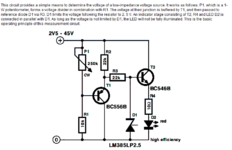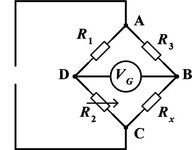neazoi
Advanced Member level 6
Hi I want to investigate if there is a simple way of measuring a resistance by having a very primitive display type that can be homemade.
One way I am thinking is to have a decade resistance network and compare the unknown resistance to be measured with different decade resistance values. if the two resistances are equal then lit a led for example.
So is there any way I can do this comparison, compare 2 resistances that way?
One way I am thinking is to have a decade resistance network and compare the unknown resistance to be measured with different decade resistance values. if the two resistances are equal then lit a led for example.
So is there any way I can do this comparison, compare 2 resistances that way?

